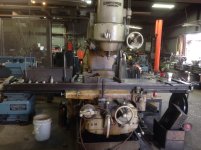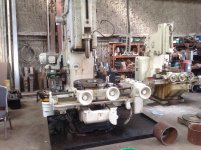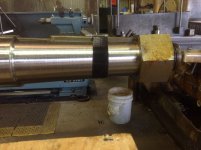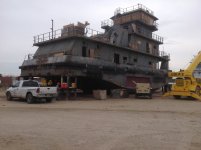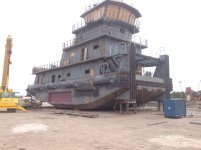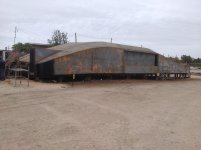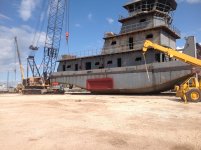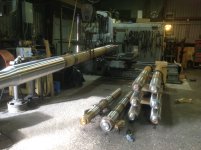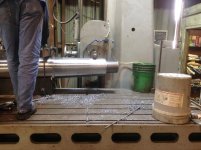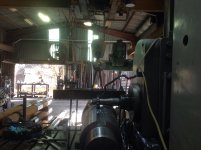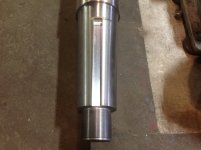jackie schmidt
New member
Jim, since we cut a lot of keyseats and keyways, we have machines dedicated solely for this purpose.
We cut the keyseats in Shafts on our #5 Verticle Mill. You notice the tapered V Block that is bolted to the Mill's table. The shaft is mounted in that block. But the weight is supported by the overhead crane. As the Mill table moves, it pulls the crane along with it. The keyseat is straight with the tape, not the shaft journals.
http://benchrest.com/attachment.php?attachmentid=21751&stc=1&d=1542471225
http://benchrest.com/attachment.php?attachmentid=21753&stc=1&d=1542472148
We cut internal keyways on our large Slotter. The head on the Slotter can be angled to match any taper.
http://benchrest.com/attachment.php?attachmentid=21752&stc=1&d=1542471456
http://benchrest.com/attachment.php?attachmentid=21754&stc=1&d=1542472293
We cut the keyseats in Shafts on our #5 Verticle Mill. You notice the tapered V Block that is bolted to the Mill's table. The shaft is mounted in that block. But the weight is supported by the overhead crane. As the Mill table moves, it pulls the crane along with it. The keyseat is straight with the tape, not the shaft journals.
http://benchrest.com/attachment.php?attachmentid=21751&stc=1&d=1542471225
http://benchrest.com/attachment.php?attachmentid=21753&stc=1&d=1542472148
We cut internal keyways on our large Slotter. The head on the Slotter can be angled to match any taper.
http://benchrest.com/attachment.php?attachmentid=21752&stc=1&d=1542471456
http://benchrest.com/attachment.php?attachmentid=21754&stc=1&d=1542472293
Attachments
Last edited:


